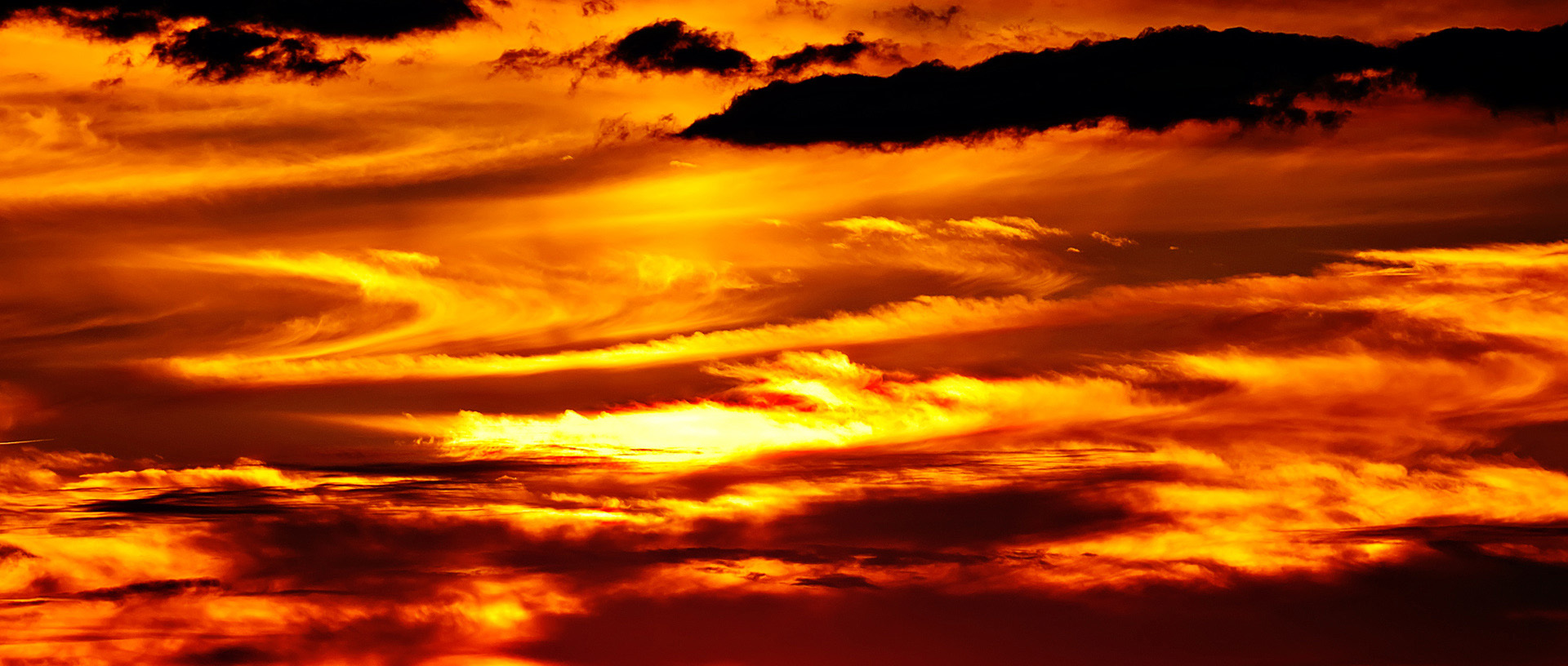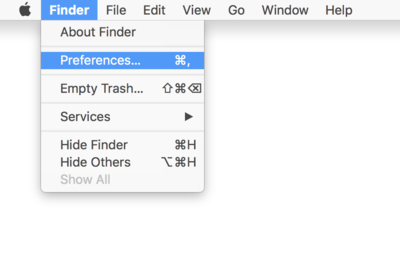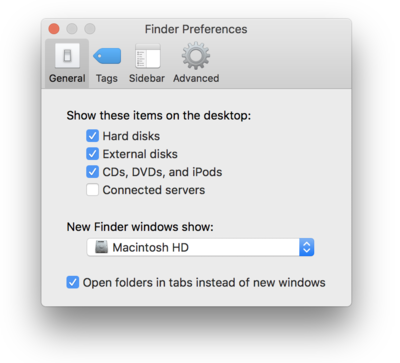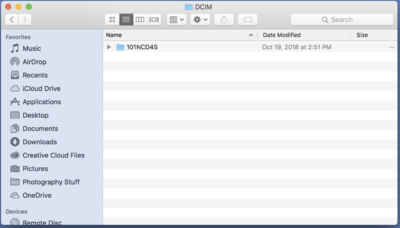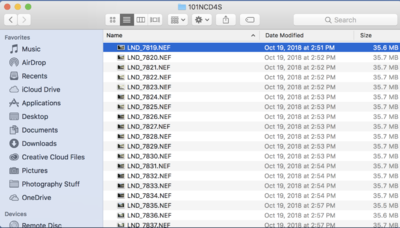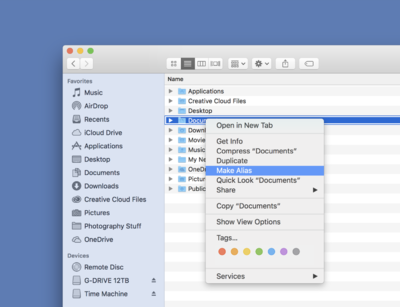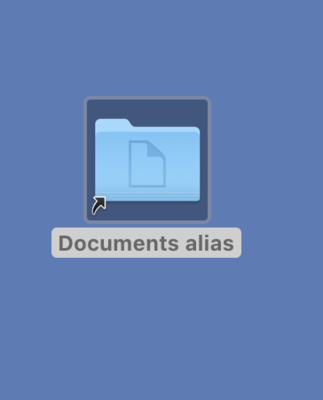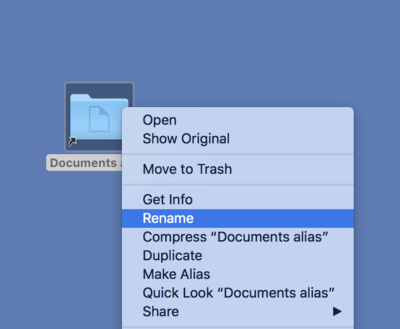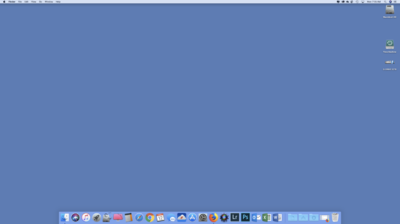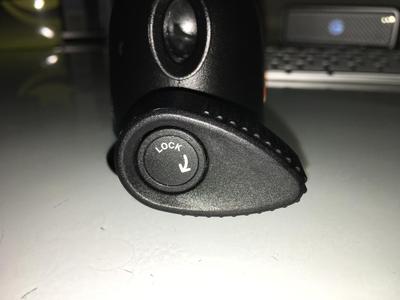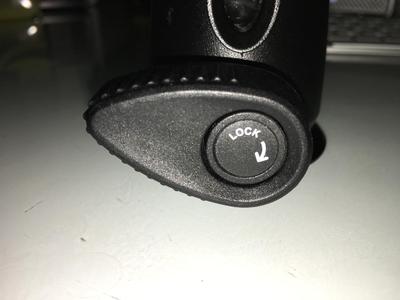-
Posts
4,103 -
Joined
-
Last visited
-
Days Won
52
Everything posted by Brian
-
Yep. They are just taking a guess and you are paying for it. I personally don't think it's the HD cable. I would purchase and run CleanMyMac X first and see what happens. Keep this in mind: With Macs, Hard Drives are not dumping grounds. I have found that if you attach externals that are almost full, it will kill performance. The Mac OS treats external drives just as if they were built into the computer, so try not to go above 75% - 80% Full on any hard drive.
-
Well, that's a decent budget for a change. My recommendations are based on you using PS CC 2018 and not editing video, only stills. Intel i7 CPU 8700K 6-Core CPU at a Minimum: Photoshop has been making improvements to take advantage of the architecture that makes a Intel i7 or i9 so fast. The new AMD Ryzen chips seem interesting and they are getting a lot of buzz...but Intel chips are proven for Photoshop. If budget allows, you could go up to a Intel i7 9700 8-Core CPU instead. Motherboard: I like Asus, MSI and Gigabyte Motherboards. Get one that supports your CPU and has at least one m.2 SSD slot. 16GB RAM at a Minimum. 32GB or more preferred. I have 40GB of RAM in my iMac computer, and am thinking about maxing it out to 64GB next year. A Samsung 1TB m.2 NVMe Drive or WD 1TB Black m.2 NVMe Drive for your Operating System and Programs, or you could go with a traditional SSD Drive. Just make sure it's a least 1TB, for whichever drive you choose as your (main) boot HD. A second larger traditional HD, at least 4TB. I like Western Digital Caviar Black 7200 RPM Drives. You could go larger if you choose to, this is where your data files / photos would reside on. Video Card: Get one that has it's own dedicated video memory. You don't have to go nuts and purchase an expensive card, though I'd shoot for at least 4GB Video Memory these days, 8GB if you can swing it. Any card made after 2015 should suffice. Here is Adobe's tested video cards list. Personally, I'd look at a GeForce 1060 card with 6GB of Video Memory. Power Supply: I'd get at least a 650 Watt Power Supply these days. 800+ Watts if you plan on overclocking and doing other stuff. Case: This is a personal preference. One that makes mounting things easy, provides cable organization and has room to grow. In the past, I would recommend a Lian-Li Aluminum case, but there are tons of different brands now. Actually, this is one area that you might want to invest a little more in as you can replace / upgrade things in the future, while still keeping the same case. Now you don't have to spend big-bucks on this, just don't skip out and get a el-cheapo $50 case either. Windows 10 Pro 64-bit. You could get Windows 10 Home, but since you are building one, might as well get the full OS. Display: At least a 24" or a nice 27" IPS-based Display. Matte Coating or Matte Screen. Dell makes decent ones and there are others out there. Just make sure it has a IPS Screen.
-
Just remember to right click the XQD Card on the desktop and select Eject when finished. Otherwise the OS will yell at you.
-
No new iMac models. Apple just released laptop updates and a new Mac Mini. I'm sorry, I forgot you were from Australia. I was quoting US prices. Yes, they do have a 4.2 GHz model in OZ. Start with the A$3449 model and configure things. With the same specs as my iMac, we are @ A$4759.00 plus AppleCare and Taxes. It's only money, right? Yep, I keep all my images on my 12TB G-Drive. I don't save any images on my internal HD. Just programs and my iTunes Library. So 1TB for me is fine. As far as a Fusion Drive, I'm staying away from them. The main reason is you do not have the ability to decide where your data resides on. Will it be on the small SSD Drive, or the larger Traditional HD? Only the Operating System knows. In the even of a catastrophic crash, recovering from a Fusion Drive is much more difficult for the data recovery places, than if you sent them in a SSD drive OR Traditional HD. I know in the past I was concerned about SSD Drives and them wearing out. While this is true, technology has greatly improved over the last 10 or so years and I've taken the leap of faith and bought one. Since Apple doesn't sell full traditional HDs any longer, your choices are limited once again. I'd rather have a little more capacity than pure speed so I chose a 1TB SSD Drive. I couldn't stomach the cost of a 2TB SSD drive.
-

Blackouts and Recommendations
Brian replied to oldschoolgirl's topic in The Windows & PC Hardware Forum
Black flickering when browsing? It's probably a inverter board problem, worn display cable, possible bad display OR the port on the motherboard that attaches to the video cable could be wacky. Tough to tell. Can you move/wiggle the screen and see if you can force the issue? I do agree, 3GB of RAM is NOT what you want with Windows 10. Actually, I recommend RAM be 16GB at the minimum with Windows 10. As far as selling you a new 240GB SSD drive. >> *SIGH* << If you are going to go to the trouble of replacing that HD, get a larger hard drive. A 240GB HD is microscopic by today's standards. You want at least a 500GB main drive, better if it's 1TB. I don't care how new a 240GB SSD Drive is or how fast it is, the thing won't do you any good if it's full. I do agree with future Windows Updates you are going to run out of room but they are not looking long term. I hate bad advice mixed in with decent advice. It just confuses people. That said, I'm surprised they didn't recommend a larger hard drive, though I'm sure they didn't have one in-stock. Sure! Let's tell her she is going to run out of room but sell her the same sized HD. (Approx.) Stupid up-sell. SMDH. Now for the 4000 days part. While it is true that SSD media does wear out over time, you would have to do something silly to really kill it. Like Defrag a SSD Drive. Never do that. I think Windows 10 won't let you, which is a good thing. If you just use the computer and don't write / erase stuff on a constant basis, it is probably fine. To clarify, if you aren't writing and erasing 40GB+ on a daily basis for the last 10 years, the drive is probably fine. Especially if its passing S.M.A.R.T. tests. I'm more concerned about the remaining free space than anything, plus SSD drives have come a long way during the past 10 years, so replacing it with a larger one isn't a bad idea. Here is a decent article: How Long do SSDs Really Last To quote the article: Now we come to the hard part. It sounds like this is a 10 year old laptop. Are you really sure you want to put money in this thing? Because if it were me, I'd be looking at a new laptop. Here is why: RAM prices are pretty high right now. They usually are at this time of year. So figure about $200 for the RAM. This might be less, or it might be more. Now, let's look at the cost of replacing that SSD Drive: Samsung 860 Pro - 1TB. That's about $300. So we are at $500, conversationally speaking. Plus, we need to purchase a program such as Acronis to clone the data from your old HD to your new HD, unless you want to install a fresh OS. Or pay someone / some tech place to do this for you. Figure about $150. So now we are up to $650 on a 10 year old laptop that would be best to nuke and start all over again with a fresh OS / New HD. With your anxiety, this sounds like a recipe for disaster. Personally, I'd rather have you network the two laptops together (it's easier than you think) and copy stuff over. This way if anything were to screw up, you have the original Laptop to go back to. As soon as you start messing with the old one, you introduce variables. So let's talk budget. -
If budget is an issue, a stock $1799 iMac is fine. I'd still get a 16GB RAM upgrade kit. Big difference between 8GB of RAM and 40GB. (You keep the existing two 4GB Sticks and add the two Crucial 8GB Sticks to the empty slots.)
-
First Question: Budget? I still do not recommend a 21.5" iMac. So at this point, we will configure a 27" model. Start with the $2299 model and tweak things: Here is the iMac that I recently purchased: I plan on having this computer for the next 7-8 years. Oh, having the keyboard with the built in number-pad is AWESOME. Spend the extra $30. Plus AppleCare and Tax, you are looking at $3600-ish. I had mine sent to a local Apple Store and I picked it up. (Actually, I had them walk me to my car with my purchase.) I also purchased this Crucial RAM kit from B&H to take the RAM from 8GB to 40GB. It's cheaper if you buy the kit from B&H than from Crucial's Website. Well, the last time I checked. I also bought this G-Drive Thunderbolt 3 12TB EHD. Actually, I purchased the RAM and HD together a few months before the iMac, so I could pay it off. Then I bought the iMac. My iMac from a powered-off state to me logging in with my password takes about 15 seconds. This sucker is fast. Oh, in case you are wondering, if you aren't a serious video editor, then you don't need a iMac Pro. In fact, Photoshop won't take advantage of a iMac Pro's features and will actually run slower than if you ran it on a tricked out iMac.
-
I also have Photo Mechanic 5. I haven't bothered to use the ingest feature either. Copy & Paste works well for me. Maybe if I was shooting sports or events again, I might use the Ingest feature to help speed things up. Right now I just 2nd Shoot Weddings and use a simple Copy & Paste to my EHD.
-
Do not use any blasted downloader programs. I don't care if it's Adobe or Nikon or Canon. Life is too short to complicate things. I have a XQD Reader hooked up to my iMac via a USB 3.0 Port. It works great! What you need to do is first turn on the ability to view your cards on the Desktop. When you are finished, you will be able to see your XQD Card / SD Card just like a EHD. First, open your finder: Then select the Finder Menu, next to the Apple Menu and click Preferences... Then check the following boxes so that they appear on the desktop: Then Click the Red Circle in the Upper Left Corner to apply the changes. Now when you insert a XQD Card, it will appear on the desktop: Simply double click on the XQD card, then double click on the DCIM folder, then you should see folders that contain your images. If you setup different banks and give each of them their own names, there might be a few folders in the DCIM Folder. If you just shoot with one bank, then there should be one. For example I shot this card with only one bank selected: Double click on your camera's folder and you should see your Raw Files. Then you simply do a "Select All" (CMD + A), right click and select "Copy" and then paste them into the folder of your choosing. Easy-Peasy! No fancy software to screw things up. Just a simply Copy & Paste. Why not Cut & Paste? Because if something screws up during the data transfer, you might lose images. So if it does screw up and you click Cancel during the transfer, you can attempt things again.
-
One more thing, purchase CleanMyMac X from MacPaw.com. I use this program at least once a week, if not every few days. Apple will say that they don't recommend this program, they are also the ones that say your HD cable was faulty when it wasn't. It's the best $40 on software that I've spent and have been using the program over the past 10 years. It helps keep the junk off your HD. Yes, you can download the trial and it will clear about 500MB of files, but if you want it to really work, you'll need to pony-up the cash and purchase it. Oh, it also has a Malware Remover built in.
-
Here is the process to create an Alias. We will use the "Documents" folder as an example. Open the finder: Then find the Documents folder under your profile right click on it and choose Make Alias: The Documents Alias should appear just below the Documents folder: Simply Drag the Alias to the Mac Desktop Then Rename it: Now you have a "Documents" Folder on your desktop that won't kill performance. You can drag files to the Documents Alias Icon and the Mac OS will put the files in the Documents folder. You can do this with any folder on your hard drive and it's the way Apple wants you to do things, though it's really not broadcasted.
-
It is true that a traditional hard drive or what apple calls a Fusion Drive (Hybrid Drive, more on this in a bit,) does having moving parts. Cables do fail, but it doesn't sound like this is the issue. The biggest thing I see is you only have 4GB of RAM, which will definitely slow things down, and I'm sure your hard drive was pretty full since it's only a 500GB drive. Truth be told, laptops...even fancy MacBook Pros only last about 4-5 years and the main symptom is they become "Too Slow" during this time period. It's just not Apple; ALL manufacturers seem to do this. Heck, laptops that cost $500 or less only last about 18-24 months. If you want something to last a bit longer, say around 7-8 years, skip the MBP and buy a 27" iMac. Honestly, the next thing I would do to this MBP is to reformat the HD and re-install a fresh OS, since you have a new one to edit on. If your MBP can be upgraded to 8GB or even 16GB, that would really speed things up. Bear in mind that you don't want to go over 75-80% Full on any HD when it comes to a Mac. This includes both the internal drive and any externals. As soon as you hit 90% full, you are in dangerous territory and once you hit 95% full, things can start to corrupt. I feel that this would have been the correct course of action, nuking the drive and starting all over, but there is still no guarantee that it would be as fast as it was new. It's still a old laptop. The other thing one can do to keep their Macs running well, is to not store files on the Mac Desktop!! The more files and crap you have on your Mac Desktop, the slower it runs. The reason is the Mac OS treats those files and folders as "Open Windows" for lack of a better term. So if you have 2000 photos from the Smith-Jones Wedding and a 300 from the Davidson family photo session, that's 2302 "open" windows. (You have to figure in the folders themselves in this count.) To give you an idea of what your Mac Desktop should look like, here is a screenshot of mine: All that is on it is hard drives, memory cards (when inserted) and the occasional screen shot file. I will put stuff on the desktop to make uploading a bit easier, but once I'm done, those files are deleted. What you CAN do, is right click on files and folders within your HD that you normally open and choose "Make Alias." Then drag the Alias File to the Desktop. Alias files are meant for the desktop. What are they? It's Mac-Speak for Shortcut.
-
You are looking to purchase a Thunderbolt 3 Dock to get the best performance if you are going to buy something new. Then connect your card reader into one of the USB ports on the Dock. Even though Thunderbolt 3 is supposed to be compatible with Thunderbolt 2, if you are dealing with a 3rd party dock, things may not be 100% future-proof.
-
Yep. CPQ adds a bit more "punch." That's normal. That's why I say don't push your colors in post. (Saturate, Vibrance, use Color Boost Actions, etc.) This is due to the ink that they use on the printers and how they are calibrated. I will say CPQ is pretty consistent, so once you figure out how to edit photos to be printed by them, there aren't surprises.
-
The one on Amazon isn’t the exact same model, but it should work fine. Buy the kit for $114 from Amazon. There are plenty of YouTube videos demonstrating the installation method. Just make sure your iMac is unplugged and you touch something close by that is metallic to ground yourself before handling the RAM. I noticed that my RAM cage in my iMac had a tendency to flop back into the computer. So be prepared for this, especially if you install it with the screen face down.
-

Need new PC, Need recommendations running CC2018
Brian replied to snapmomma76's topic in The Windows & PC Hardware Forum
Oh, I recommend SSD Drives. Just not small capacity SSD drives. That's why I linked to 1TB SSD drives. m.2 drives are all the rage now, you just need a motherboard to support it. Where folks run into problems is their computers come with a 128GB SSD Drive and then they dump all their files to that drive, which results in problems. I don't care how fast a SSD Drive is, it won't do you a damn bit of good if it's full. If you go with a traditional hard drive, make sure they are 7200RPM and not 5400RPM and it's at least 1TB. -

Need new PC, Need recommendations running CC2018
Brian replied to snapmomma76's topic in The Windows & PC Hardware Forum
OK. One slight Red Flag. It only has a HDMI port for video. The monitor that I recommended above has a DisplayPort, DVI Port and VGA Port. No HDMI port. Therefore, you will need a HDMI to DVI cable in order for that Dell 24" monitor to work. https://www.monoprice.com/product?p_id=2404 Before you click buy on anything, run it by me first. -

Need new PC, Need recommendations running CC2018
Brian replied to snapmomma76's topic in The Windows & PC Hardware Forum
I don't see any red-flags. I'd say you'd get a good 5-7 years out of that PC. -

Need new PC, Need recommendations running CC2018
Brian replied to snapmomma76's topic in The Windows & PC Hardware Forum
That $1399.99 one you just linked to I like. The main problem I keep running into with building one myself, is the price-tag. I have a tendency to purchase the high-quality components. The reason is I keep my computers for 8-10 years. So my final cost seems to end up over $2500. That's why I've never put together a "What to Buy" thread. I'm still researching. -

Need new PC, Need recommendations running CC2018
Brian replied to snapmomma76's topic in The Windows & PC Hardware Forum
Yeah, I'm in the same boat. I think I'm going to end up building my next computer. If you go the Intel route, get a Intel Core i7-7700 @ 3.6GHz CPU. If you do end up getting a AMD-based Computer, make sure it has a AMD Ryzen 7 2700X @ 3.7GHz CPU chip in it. Those two chips are each others equivalents. At this point, deciding on what chip you will purchase will determine what motherboard you will use. I like Asus Motherboards. Gigabyte Motherboards aren't bad either. I've used both. After choosing the Motherboard, you then can buy the RAM that is meant for it, which is the next step: 16GB RAM at a Minimum. 32GB Preferred. Then we pick the HD: 1TB Main HD for the OS and Programs and then a second larger hard drive, like 4TB for your data. Some folks will buy a SSD drive like this one. Others will opt for a drive like this WD PCIe m.2 Drive, or this Samsung NVMe SSD Drive. I highly recommend a Western Digital Caviar Black 7200RPM drive if you go the traditional route for your main boot drive. Power Supply, 750 Watts these days is good. If you get a video card that requires a lot of "Umph," maybe a 850 Watt P/S would be better. Oh, there is the cooling system you will need to consider, along with the computer case. Video Card: Here is Adobe's List of tested cards. I'd get at least a 4GB Card and one that was made around 2015 or newer. -

Need new PC, Need recommendations running CC2018
Brian replied to snapmomma76's topic in The Windows & PC Hardware Forum
If you want the best color, contrast and sharpness, today's fancy screens require a digital connection. So just having a VGA Port just doesn't cut it. You have no idea on what you are missing out on. So I would budget for a new display if you don't have any other ports than a 15-pin VGA connection. The VGA port has been around since 1989. Manufacturers don't have to pay royalties on that technology anymore, which makes their COGS lower and results in more profit. VGA is fine for general computing and web browsing. For editing photos, notsomuch. In fact, VGA was only meant to go up to a 20" CRT (Tube) Display. Not a Flatscreen. Once you see the difference, you won't ever go back. As for the PC you linked to, even though it's a "Gaming" computer, that AMD CPU chip is really under-powered. I'd skip that one. Though the rest of the specs seem to be fine. The company is saving money and offering a $999 computer by skipping out on a decent CPU. They hope that you won't notice since it's marketed as a "Gaming" computer. Always look at the specs. -
There has been a shortage of RAM, it always happens at this time of year. The materials that make the memory sticks become a little more scarce. Then they restock. What RAM did it link you to? Do you have the part number? Sometimes you can find it on Amazon, B&H, etc. In fact, I bought my Crucial RAM for my new iMac from B&H. It was $20 cheaper than Crucial had on their website. LOL!
-
Apple RAM is insanely overpriced. I’ve used Crucial RAM in my computers since the 1990’s.
-
Head to Crucial.com. Run their scanning tool, it will take you to a page with your options. You are looking for a 16GB Kit (two 8GB sticks). That should take you from 8GB to 24GB without removing existing RAM. Which iMac size do you have? It sounds like the 27” model. If it is, it’s pretty straightforward to upgrade your RAM.
-

